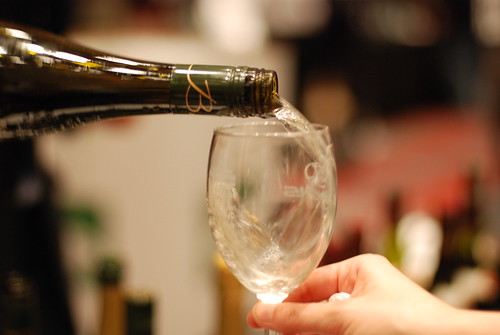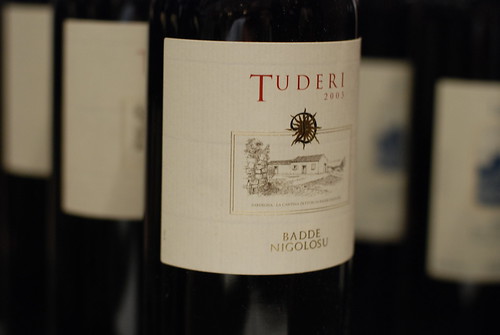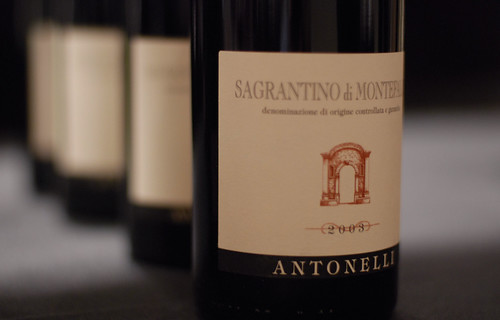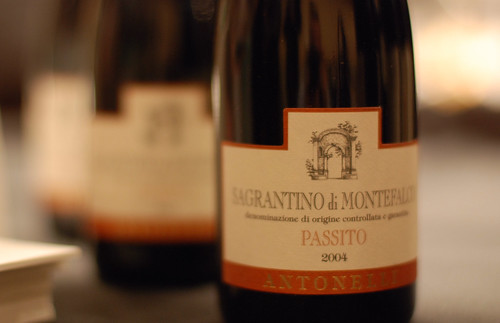Philly Wine Fest 2008 Wrap-Up

Say what you want about Pennsylvania’s antiquated liquor laws; the PLCB throws one hell of a party.
The PLCB and Philadelphia Magazine teamed up again to host the Seventh Annual Philadelphia Wine Festival on May 10. By successfully addressing a few key issues that have dogged past festivals, the PLCB delivered an event this year that will be hard to beat.
In the past, tight quarters and narrow aisles turned even the most polite, well-dressed group of sophisticates into a selfish, inconsiderate, elbow-throwing mob. But this year the PLCB finally chose a space large enough to accommodate Philadelphia’s dedicated mass of wine lovers—the expansive Ballroom at the Pennsylvania Convention Center. Sure, at times it felt like you were backstage at The Price is Right with the gaggle of lanky models in little black dresses attempting to cat-walk inconspicuously around the SUVs and Jaeger-le Coultre display cases in the center of the Ballroom. And yes, this spectacle would be easy to mock. But, presumably, lining up these sponsors made it possible for the PLCB to secure this venue, which is a decision that clearly paid off.
Also, at prior festivals the food always seemed to be an issue—there just never seemed to be enough to go around. This year, however, there was an endless supply of pastas. They were not the most refined dishes, with the exception of Penne Restaurant’s wonderful Mushroom Cavatelli with Goat Cheese. But they were just what you needed to soak up the high-octane Cabs you were [ahem] “tasting” for the past two hours.
Then, of course, there were the wines. This year there seemed to be a larger selection of higher-end, artisinal wines—the type of wine you expect at a wine festival.
However, having this level of depth at the festival was—you’ll pardon the expression—a bit of a cork-tease. Although all of the wines at the festival technically are available through the PLCB, many of the stand-out bottles are difficult to obtain. Some of them are available at the local PLCB specialty stores only in very limited quantities (see e.g., the Tuderi, below), while others can be purchased only through the PLCB’s Special Liquor Order (or “SLO”) process, which is pricey because it requires consumers to buy at least six bottles at a time.
Moreover, in stark contrast to the festival’s bounty, the PLCB specialty stores, in case you haven’t noticed, clearly are stocking less wine these days. Rumor has it that the wine inventory has been cut by 40%. And although the Chairman’s Selection program is not dead, as I predicted it has become a thin shadow of what it once was.
After the jump, I’ll talk about my three favorite wines at the festival. And tomorrow I’ll share my secret on how to work the PLCB system to get your hands on these and other hard to find wines.

Best Wine: Remoissenet Bienvenues Batard-Montrachet Grand Cru 2005 (PLCB No. 21214, $239.99).
Most of the folks attending the festival knew there were certain wines you had to hit, like the First Growth Bordeaux. But judging by the amount of eavesdropping my friends and I witnessed as we talked about this Grand Cru white Burgundy, not everyone, it seemed, had it on their radar.
This Batard was over the top. Subtle aromas of wildflower blossoms. Minerals, fresh citrus and stone fruits, all of which were delicate and focused. Underneath, this princess cradled a deep, layered core of secrets she was only willing to whisper to you, slowly, one at a time. Seductively complex. You could spend the rest of your life courting this wine and not a minute of your patient adoration would be wasted.
There are 12 bottles of this wine at the 12th and Chestnut store. But at $240 a bottle, I'm still waiting for my financial aid application to be approved.

Most Exciting Wine: Tenute Dettori Tuderi 2003 (PLCB No. 23590, $45.99).
Alessandro Dettori is one of the most provocative wine makers in Italy today. The reason: he kicks it old school. Aside from temperature control after bottling, Dettori uses virtually no wine making technology. His wines are natural and unmanipulated—no filtration, no clarification and no stabilization. Maceration and fermentation for most of his wines, including the Tuderi, all take place in small cement tanks. Plus, his grapes are hand-picked and the wines are hand-bottled. For Dettori, it’s clearly a labor of love. A defiant respect for tradition. And it’s as close as you can get to true Old World Italian wine making without a time machine. The result is a true wine geek’s wine.

The Tuderi is a brilliant example of this philosophy. The wine is made with 100% Cannonau (Italy’s name for Grenache). Because there’s no filtration, the pour looks as bright and as dense as a glass of V8. The sight may be a bit jarring to some, but the palate convinces you never to doubt the genius that is Alessandro Dettori: Bitter cherry, wild herbs, leather and spices tempered with refreshing, vibrant acidity. History and tradition never tasted so good.
The only problem with the wine is its availability. There are only 15 bottles in Philadelphia County, 9 of which are in Center City. The fact that that the distributor’s rep had almost as many bottles at the festival that the PLCB has for sale in the entire county is deeply disappointing.

The Grape You Should Get To Know: Antonelli’s Sagrantino di Montefalco 2003 (PLCB No. 24668, $31.99) and its Sagrantino di Montefalco Passito 2004 (PLCB No. 10057, $36.99).
Sagrantino is one of the greatest grapes you’ve probably never heard of. The reason: it’s rare. Indigenous to Umbria, there are only about 250 acres of Sagrantino vines in existence and only about a dozen producers that work with it. And it’s unlike any other Italian wine. Dense, big red brambly fruits, rich savory aromas, exotic spices and pronounced but well-integrated tannins make this wine fun to drink young.

Sagrantino’s often made passito style—drying the grapes after they’re picked to concentrate the flavors—for a lovely and unique dessert wine. It’s exciting that these two wines are available through the PLCB. Unfortunately, there are only 4 bottles of the Sagrantino di Montefalco in Philadelphia County (Germantown) and none of the passito.
Tomorrow, I’ll share my secret on how to work the PLCB system to get your hands on these and other hard to find wines.
For more pics of the festival, check out my Philly Wine Fest 2008 set on Flickr.












No comments:
Post a Comment